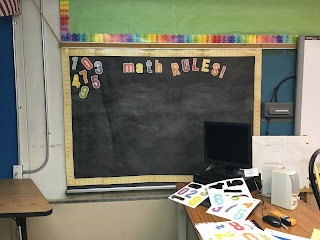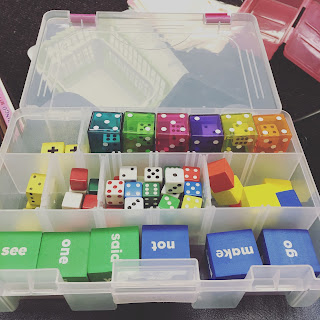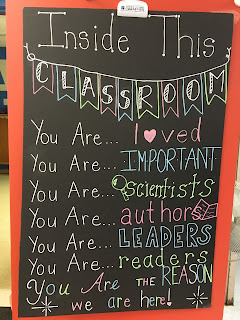This year, I streamlined my open house and received awesome feedback from my parents. AND it was much less nerve racking and easier to prepare!
Trick? Engage them, make them laugh, and give them markers!
Open House 2016 Schedule
- Initial welcome and paper grab
- Mystery reader sign up
- Helping hands grab
- Find your seat
- Read your student note
- Explore the classroom
- Powerpoint Presentation
- Write a note to your student
- Final private comments
As the parents slowly fill the classroom, I have them file towards the reading table where each paper they will need is layed out in a row. On the smart board (I am lucky!) I stream pictures of the students so far this year in the classroom. I find that this brings the parent nerves down and gives them something to talk about with each other. And smile about!
On the reading table, I have
- a sign in sheet-so I can be sure who showed up, and which parent(s) in particular from each family
- a copy of the powerpoint slides (so they don't need to look at me if they don't want to) AND so that they can keep it and bring it home to read when they forget
- a SHORT summary of the math, literacy, writing, and science programs I use (basic 2-3 sentence summary and overview of topics/skills covered for the year)
- Mystery Reader sign up sheet and description
On a separate, highly decorated table, I have our helping hands sign and many, many little hand cut outs with labels of supplies we need and wish list items for the classroom
Parents can take one (or multiple) hands as a reminder of what they would like to purchase to provide for the classroom.
Our Mystery Readers are parents and family members from the classroom who sign up for a time to come into the classroom and read 1-2 books. They can choose any book from home or arrange to use one of the books from our classroom. It is a perfect way to make the home to school connection more concrete and real. Your Mom reads too?! The students are always unaware of when and who is coming into the classroom so it is a surprise to all! Just don't forget to tell your secretary that it is a surprise so the name doesn't come blaring over the loud speaker!
Our Mystery Readers are parents and family members from the classroom who sign up for a time to come into the classroom and read 1-2 books. They can choose any book from home or arrange to use one of the books from our classroom. It is a perfect way to make the home to school connection more concrete and real. Your Mom reads too?! The students are always unaware of when and who is coming into the classroom so it is a surprise to all! Just don't forget to tell your secretary that it is a surprise so the name doesn't come blaring over the loud speaker!
Next, the parents find their child's seat and are surprised by a "note" written by the student to the parent about what their family enjoys doing. They always write something wonderful about excessive sleeping, tv watching or partying. Never fails to produce laughs :) During this time, they are also encouraged to explore the room and ask questions.
After about ten minutes, I gather everyone back together and go through the slideshow. I have included some of the slides below that I bought from the not so wimpy teacher and absolutely LOVE!
When I finish going through the slides, I pass out a paper to the parents to fill out and to be left on the desks for the kids to see in the morning. The kids LOVE IT. It makes the fact that their parents cared enough to come more real for them.
FREEBIE !
FREEBIE !
Finally, I end my spiel and pass out a final comments sheet.
Hope this helps ease the pain pleasure of Open House! Enjoy your FALL!!!
and, happy teaching!
Ms. Hendsbee








































